|
Bücker Bü-181 Bestmann Panzerjadgstaffeln
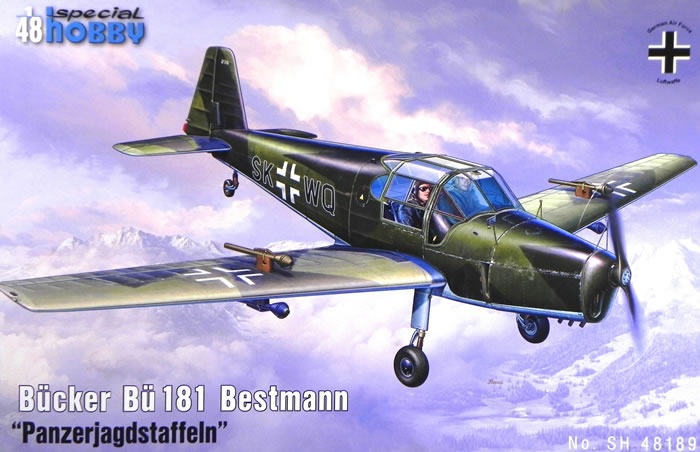
Special Hobby, 1/48 scale
S u m m a r y : |
Catalogue Number: |
Special Hobby Kit No. SH48189 – Bücker Bu-181 Bestmann Panzerjadgstaffeln |
Scale: |
1/48 |
Contents & Media |
51 parts in grey plastic (including 23 not used), 2 parts in clear plastic, 2 resin parts, one photo-etch fret, and one decal sheet covering three subjects. |
Price: |
Available on-line from these stockists:
Click here for currency conversion |
Review Type: |
First Look. |
Advantages: |
Simple parts breakdown and engineering with nice surface textures. Nicely detailed photo-etch fret. |
Disadvantages: |
Limited production: more effort required for clean up and test fitting of major parts. White and yellow decals insufficiently opaque. |
Conclusion: |
This is a nice model of a lesser-known but important aircraft in a rare, end of the war configuration.
Out of the box this will build into a nice looking model but would really shine with some super detailing.
Recommended. |
Reviewed by John Miller

Special Hobby’s Mirage F.1B/BE is available online from Squadron.com
The Bücker Bü 181, Bestmann (a German maritime term designating a member of the deck crew on fishing vessels) first flew in February 1939. The Bestmann was a single-engine low-wing monoplane with fixed undercarriage, split flap, twin controls, and two adjustable, side-by-side seats. The cabin section of the fuselage was of a tubular steel frame construction whereas the rear fuselage was composed of a wooden shell. The wing assembly and tail unit were also of wooden shell construction. All the rudders, elevators and ailerons had wooden ribs and were covered in fabric. The flaps were metal covered on the B types and wooden on the C types. The aircraft was designed for training flights, pleasure trips and was fully aerobatic.
After flight-testing by the Reichsluftfahrtministerium (RLM), the Bü 181 was adopted as the standard Luftwaffe primary trainer with series production commencing in 1940. The production types were designated B or C with only slight variations between each and powered by the Hirth HM 500 A or B.
The Bücker factory at Rangsdorf built most of the Bü 181's, but demand necessitated licensing to the Fokker Company in the Netherlands, who subsequently built an additional 708 aircraft before the end of the war.
The Bü 181 was also built by Zliner Flugzeugwerke AG plant at Zlin, in the Bohemia & Moravia Protectorate. After the German withdrawal the Zlin works continued production of the type (now named the C.6 and C.106) for the Czechoslovak Air Force or the Zlín Z.281 and Z.381 for civil use. 783 of these aircraft were built.
In Sweden, Hägglund & Söner AB in built 120 Bü 181's under license for the Swedish military (designated Sk 25) between 1943 and 1945. During the 1950s the Heliopolis Aircraft Works in Egypt acquired a Czechoslovakian license to produce the Zlín Z-381 with a 105 hp Walter-Minor engine for the Egyptian Air Force. Now named the Gomhouria (meaning "Republic") the type was supplied to other Arab air forces with a total 300 produced.
A Desperate Weapon for Desperate Times
Although built primarily as a trainer, the Luftwaffe also used the type as a courier & liaison aircraft. In the desperate closing months of the war (March, 1945) an order was issued to concentrate all available Bü 181s for modification to either a "tank busting" version with four Panzerfaust anti-tank grenade launchers from wing-mounted launchers or a night harassment type carrying three 50 kg bombs. These units saw very limited use in the final days of the war due to the increasingly chaotic situation. Some missions were carried out, however, achieving moderate success at the price of severe losses. One restored Bü 181 Bestmann in tank buster configuration is on display at the Deutsches Technikmuseum in Berlin.
Special Hobby released their new mold Bü-181 in 2016. The current offering represents a re-boxing of the earlier kit with an additional sprue for the Panzerfaust version. I would characterize this kit as emblematic of Special Hobby production circa 2010. This is a nice kit that will build into a very attractive model but most of the moldings lack the crispness we’ve come to appreciate with more recent Special Hobby kits. There are a few gems of detailing though and we’ll get to those.
Much like the actual Bestmann, this is a straightforward simple kit of conventional design. It is a limited-production kit however, and as such extra elbow grease will be required to get the most out of it.
The kit parts are supplied on three sprues composed of the somewhat soft grey plastic common to this manufacturer. Most parts are cleanly molded but have a small amount of flash that will have to be dealt with prior to assembly. There are no locator pins on any of the major parts although the horizontal stabilizers and wings mount via tabs and slots.

The wings, ailerons, and elevators have very nice surface detail that will look great under paint. Being a trainer, the cockpit wasn’t overly complex and similarly, the detail here is simple but adequate. Of note is the beautifully detailed instrument panel.
If the very nice instrument panel decal lines up sufficiently on this part, the combination should be very convincing.
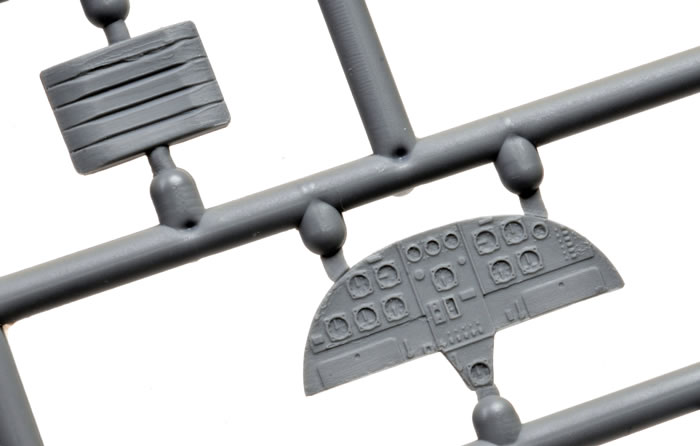
The third and smallest sprue provides parts for the landing gear and Panzerfaust modification. The detailing on this sprue is beautiful. The wheel hubs, ribbed tires, and tail wheel are beautifully detailed and to scale. The Panzerfaust grenades are nicely molded and will look great with careful painting and detailing. Likewise, the detail of the cloth covers over the gear struts and the oleos is beautiful and reminiscent of more recent, state-of-the–art moldings by Special Hobby.
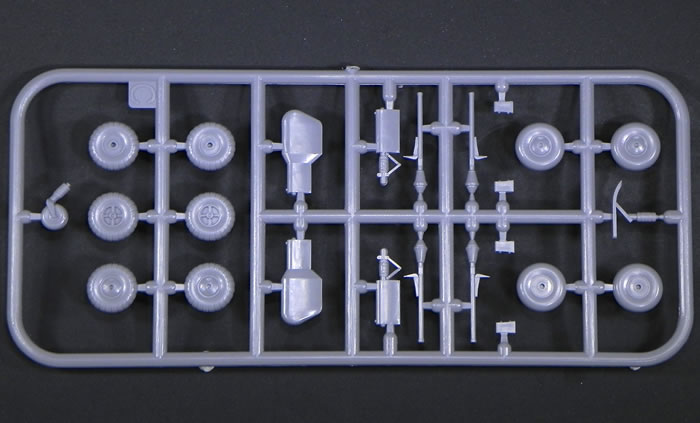
The photo-etch fret offers complete harnesses for both seats and a nice assortment of levers and details for the cockpit. The cargo restraining net is particularly nice and should really dress-up the rear cockpit area.
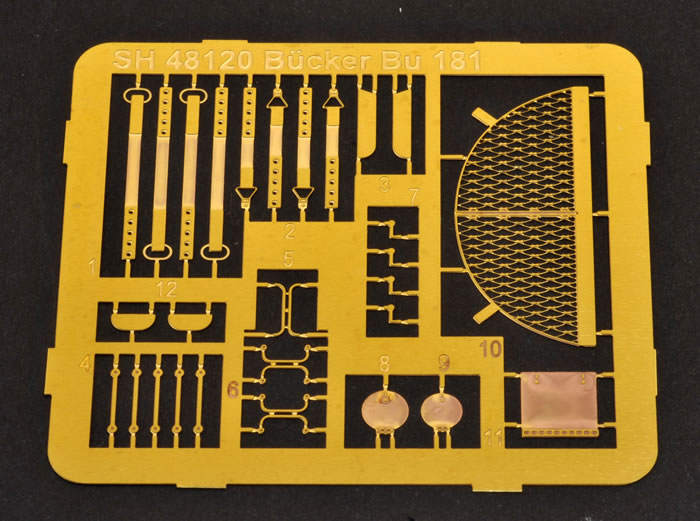
The engine front and hollow exhausts are supplied as nicely detailed resin parts.
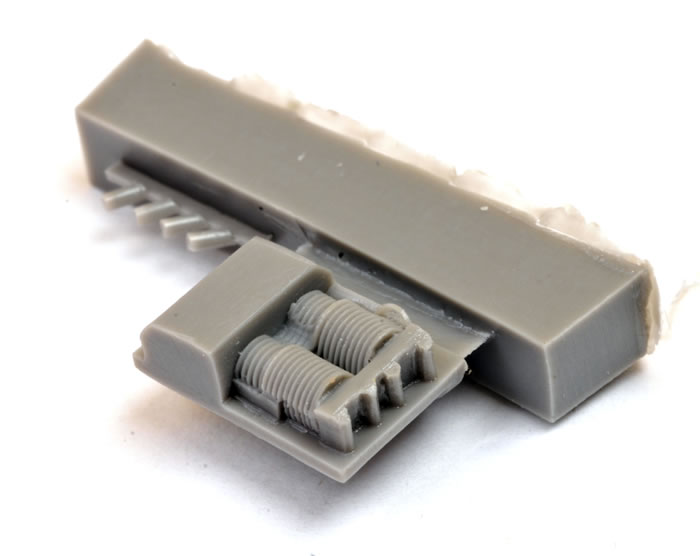
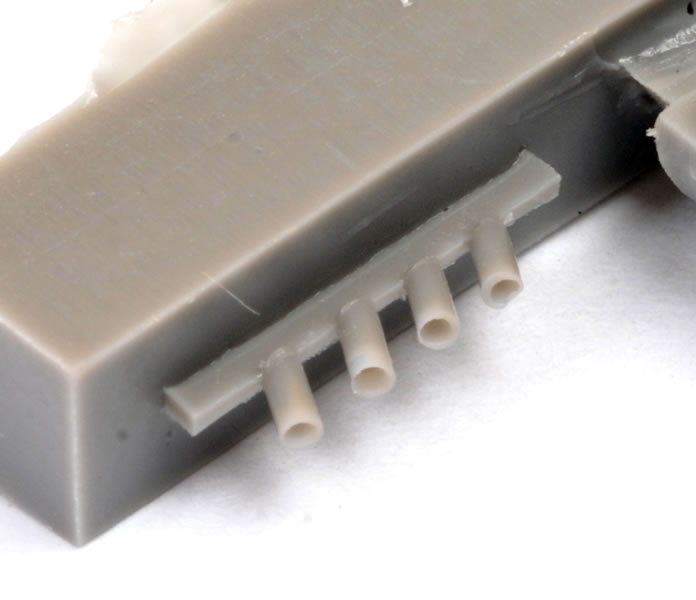
The two clear canopy parts are nicely molded with restrained canopy framing and crystal-clear clarity. The canopy is supplied as closed.
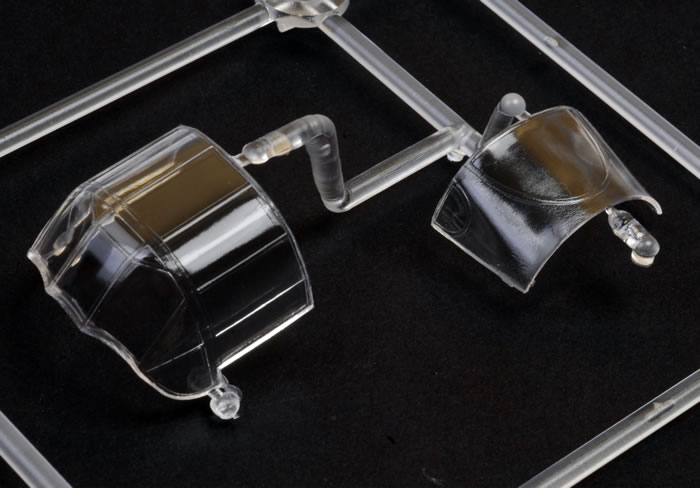
A number of parts are present that are not designed to be used with this release but suggest that we will see different variants in the future. These include four Panzerfausts with wing mounts, and skis.
Markings
The decal sheet is printed by Special Hobby and provides markings for three aircraft. All feature the standard RLM-70/71 splinter scheme with RLM-65 belly. Individual aircraft are "Yellow 10" (small number 10 in yellow on rudder), "SK+WQ" and KV+.
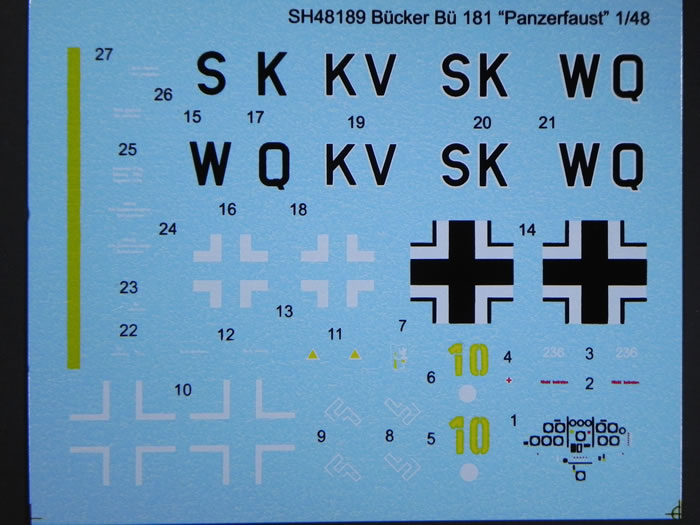
Although the registration is good both the white and yellow decals are somewhat translucent. The instrument panel decal is particularly nice with appropriately scaled instrument bezels and faces. This should look great on the beautifully detailed instrument panel.
This is a nice kit of a somewhat rare airplane in a configuration that quickly brings to mind the desperate final days of WWII. With some work, this kit will build into a very nice model. With additional detailing and weathering, this could be turned into a showstopper due, in part, to the rarity of the subject.
This build will require some test fitting and adjusting (read sanding and filing) and a willingness to spend the extra time required to achieve a good fit of all the major parts. That said it’s a simple kit, with relatively few parts, and minimal resin and photo-etch. With some patience this kit is not beyond anyone with a bit of experience building limited-run kits.
Recommended.
For more on this review please visit Modelpaintsolutions.com
Review Text Copyright © 2017 by John Miller
Images Copyright © 2017 by John Miller and Brett Green
Page Created 18 July, 2017
Last updated
19 July, 2017
Back to HyperScale Main Page
Back to Reviews Page |
